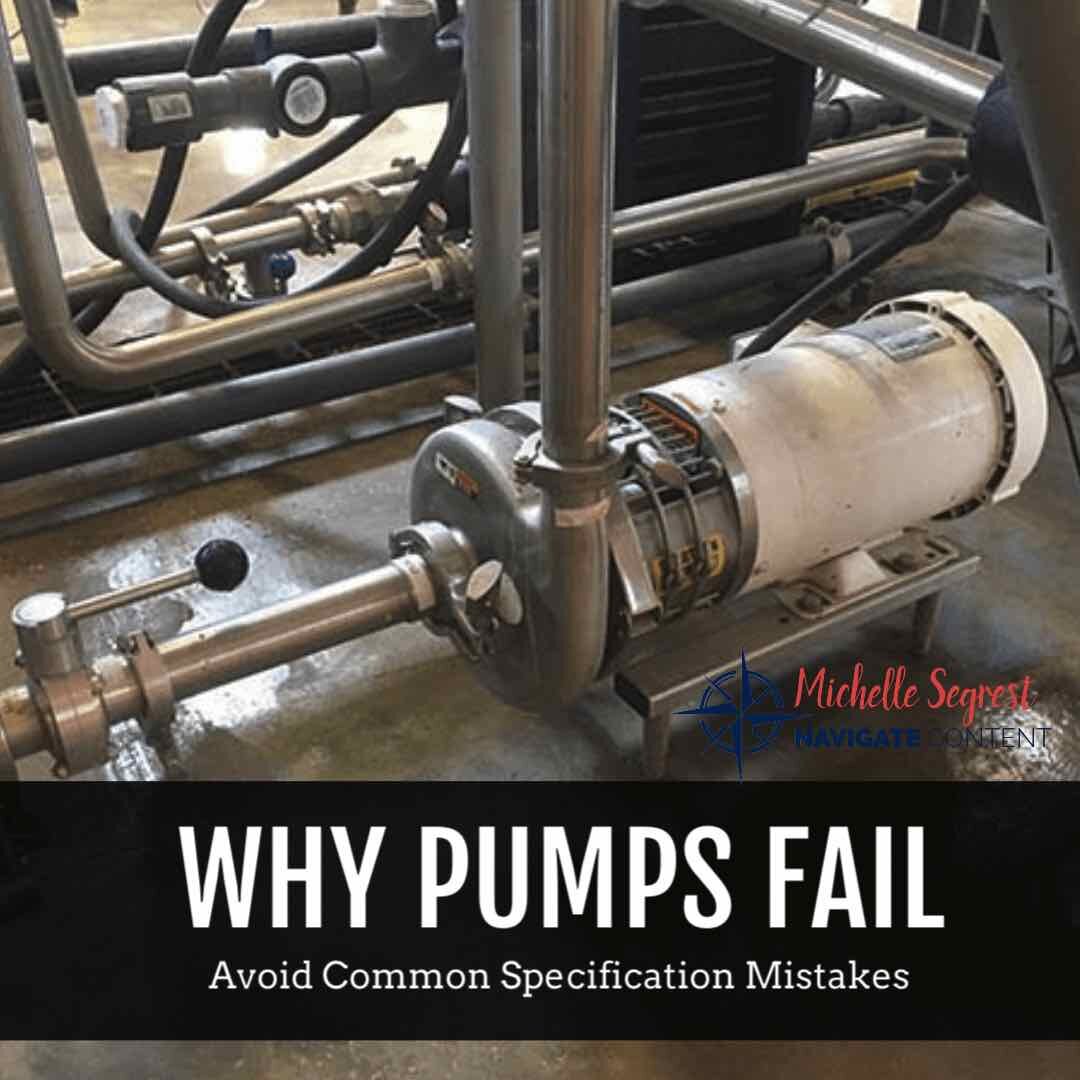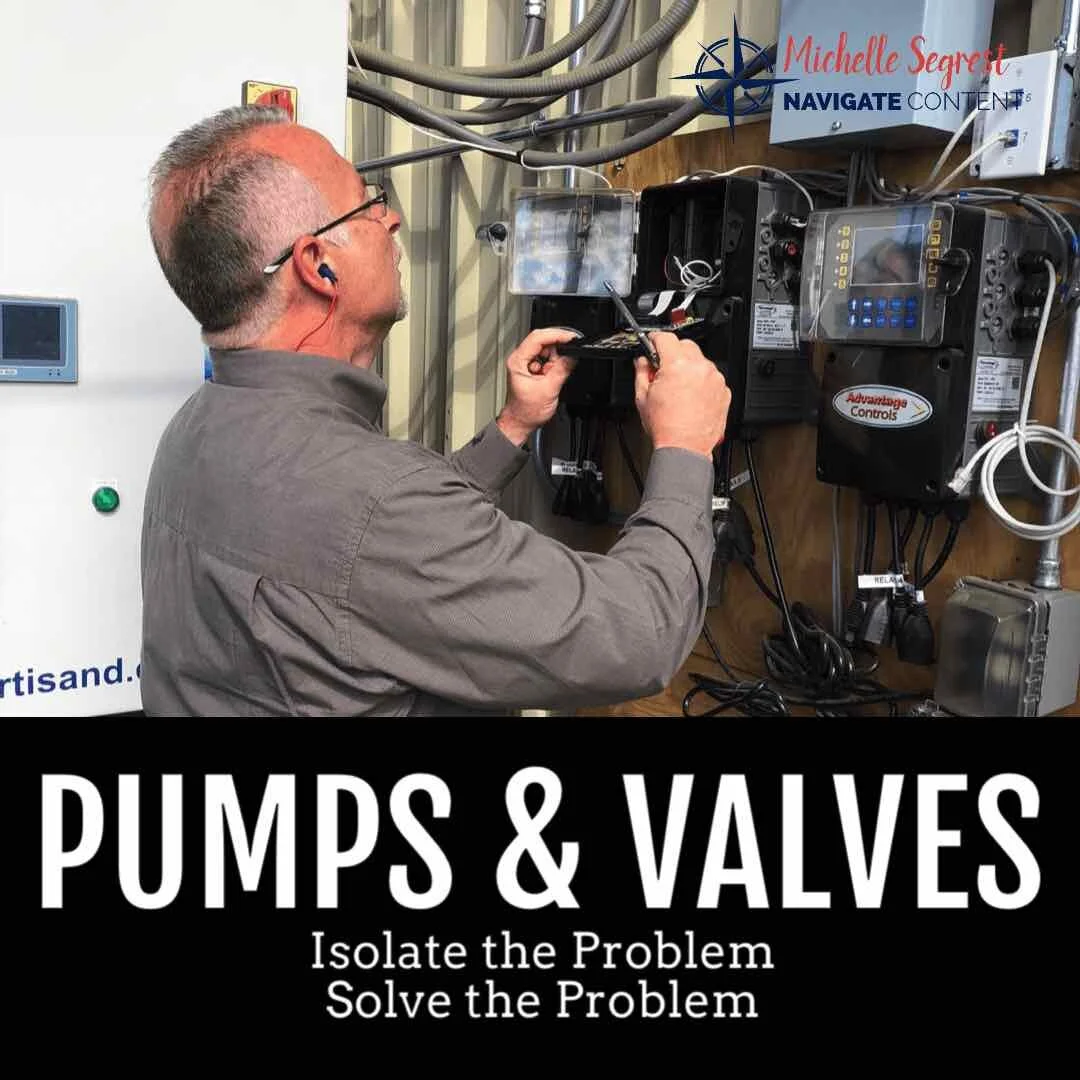Top Tips to Ensure Chemical Pumping Performance
/The biggest advancements in chemical pumps within the past decade come from the technology of automation and instrumentation built into metering and dosing pumps. A chemical pump expert shows how preventive maintenance can ensure chemical pumping performance and provides the Top 5 Tips for preventive maintenance for chemical pumps.
By Michelle Segrest, Navigate Content, Inc. - Reporting for Efficient Plant Magazine
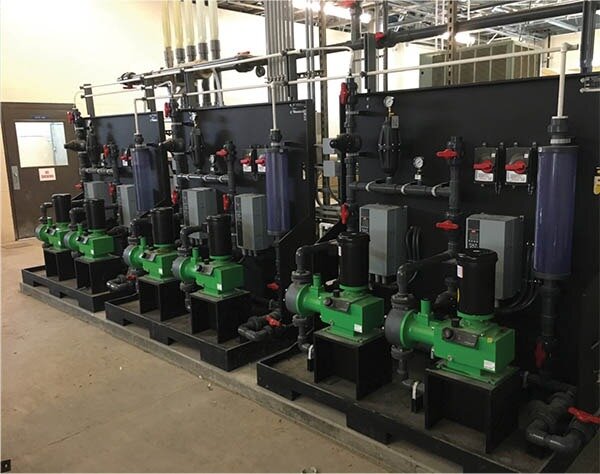
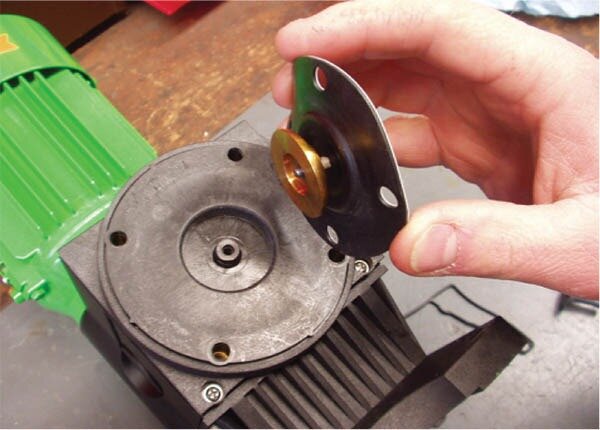
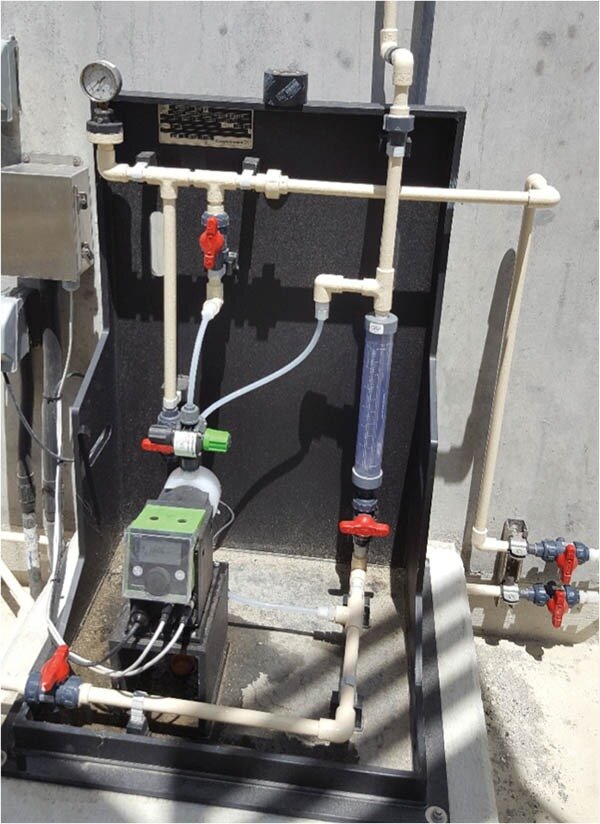
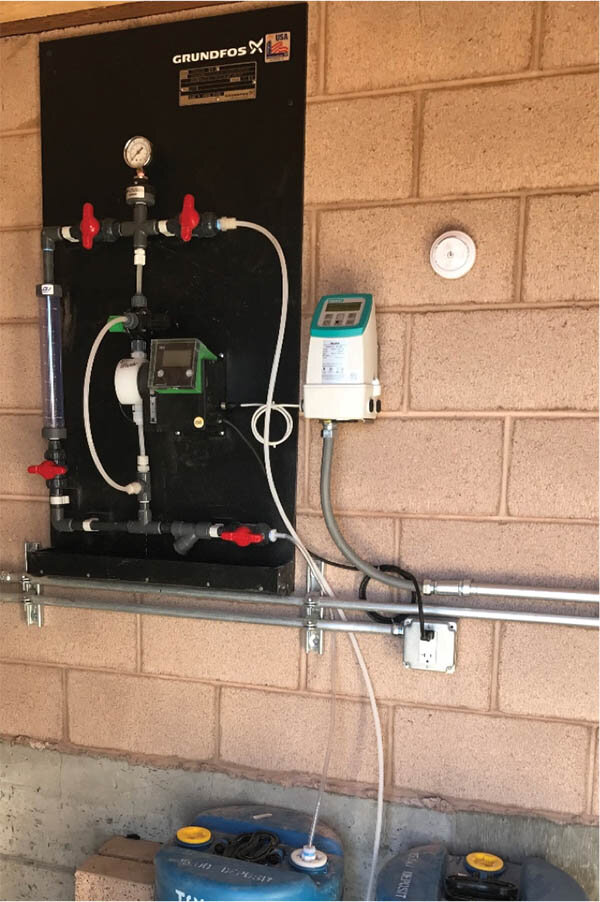
Understanding that flow components such as diaphragms and check valves will start to show wear before they fail can be strong motivation to incorporate an effective preventive-maintenance program for chemical-processing equipment, according to metering-pump expert Jim Holts, senior technical sales manager, dosing pump line, Grundfos Pumps Corp.
“It is very common in this industry to say, ‘I’m going to wait until something fails, and then fix it,’” Holts explained. “Proactive maintenance is the key. When the components start to wear, you will start to lose the accuracy of your pump, which is one of the reasons you bought a metering pump to begin with—for it’s high, repeatable accuracy. And since we may classify metering pumps more on the instrumentation side, just remember that you are paying for something you are not getting if you are not doing proper maintenance.”
Holts has 37 years of experience in the positive-displacement pump-market, including 31 years in dosing/metering pumps. He has worked with several companies and a variety of positive-displacement pump technologies. He’s also a member of the committee responsible for the book Positive Displacement Pumps–Controlled Volume for Petroleum, Chemical and Gas Industry Services: API-675 Standard 3rd Edition.
According to Holts, the biggest advancements in chemical pumps within the past 10 years come from the technology of automation and instrumentation built into metering and dosing pumps.
“Chemical pumps have come a long way,” he explained. “We must understand that we now can get actual feedback from the pump on the control side. There are alarms and warnings that tell us when the chemicals are not pumping properly. These pumps can actually correct themselves when they are not pumping properly. They can calculate flow and send this information back to the SCADA and control systems. When I first started in the chemical-metering-pump business, these pumps were part of the instrumentation group. Then they became part of the rotary equipment group. Now, with all the controls and integration, you are seeing the instrumentation people involved in the controls and selections of chemical metering pumps.”
How Diaphragm-Style Pumps Work
Metering, or dosing, pumps are usually reciprocating diaphragm-style pumps with the ability to accurately inject a variety of chemicals. These types of pumps fall into two categories—mechanically actuated pumps and hydraulically actuated pumps. As far as maintenance and reliability functions are concerned, there are some similarities and some differences in the two types of pumps, Holts said.
Both types have diaphragms, but in mechanically actuated pumps, the diaphragm is directly connected to a reciprocating piston that pushes and pulls it back and forth. In hydraulically actuated pumps, the reciprocating piston forces hydraulic oil back and forth against the diaphragm to cause the diaphragm to move. Both pump types use check valves mounted in the head to assist in creating the pumping action.
Best Maintenance Practices for Chemical Pumps
Mechanically actuated pumps that operate in continuous operation should be inspected yearly, which includes visually inspecting the diaphragm for cracks, Holts said. It is a good policy to change the diaphragm every year for a pump that is in continuous operation as wear and separation can occur between the PTFE face and elastomer backing material. This is commonly referred to as “delamination.”
The suction and discharge check valves should also be inspected for signs of wear, especially between the ball and seats. It is a good policy to change the suction and discharge check valves every year for a pump in continuous operation.
Depending on the liquid being pumped or the pump discharge pressure or even the style of pump, wear can occur between the ball and the seat in the check valve. “These days most mechanically actuated pumps are dry and do not contain any oil or grease internal to the pump for lubrication,” he explained. “But if the pump does have oil or grease, then it should be identified and checked yearly.”
Hydraulically actuated pumps that operate in continuous operation should be inspected quarterly to confirm the hydraulic level is within the required volume, which is usually measured by an internal dipstick. It is recommended that the diaphragm also be checked and changed annually for continuous-operating pumps, especially in higher-pressure applications where hydraulically actuated diaphragms operate under greater forces.
The suction and discharge check valves should also be inspected for signs of wear, especially between the ball and seats, Holts recommends. “It is a good policy to change the suction and discharge check valves every year for a pump in continuous operation. Depending on the liquid being pumped or the pump discharge pressure or even the style of pump, wear can occur between the ball and the seat in the check valve.”
It is good practice to recalibrate a metering or dosing pump after the diaphragm and/or check valves have been replaced to ensure the pump is operating within its parameters.
Maintenance and Reliability Challenges for Chemical Pumps
Holts said he cannot stress enough the importance of converting from the run-it-until-it-breaks mentality to a focus on proactive maintenance. “You buy a chemical metering pump because you want to accurately feed chemicals,” he said. “There are some wear components that will continue to wear, and this will affect the accuracy of the pump before the pump will fail. Ball check valves tend to lose seating action over a period of time, but the pump still pumps so people don’t think of proactively performing maintenance every one or two years. They think everything is still working. In reality, if they were to test the pumps on a calibration column, they would see that they are not pumping the volume they think they are pumping because they are leaking internally around the check valves.”
New pumps being developed will automatically alarm the customer after 8,000 hours of continuous operation or after two years of intermittent operation. Alert time is programmed into the pump so a warning will tell the operator that it’s time to put in a spare-parts kit, and will even provide the spare-parts kit number.
From an operation standpoint, certain chemicals (such as sodium hypochloride) are very difficult to pump, Holts said. “It can be very challenging to pump this type of chemical because it tends to gaslock reciprocating metering pumps which shuts down operation. The biggest challenge is proper installation and operation of certain chemicals that have volatile vapor pressure, like sodium hypochloride.”
The most important way to avoid this is to have an effective installation setup. This can help avoid some of the gas-locking problems by using things such as vents and the proper equipment, such as ball valves that are vented to prevent over-pressurization to the line. Having an understanding of the control and operation of the pump is crucial, Holts explained.
“A lot of times, people will buy a pump, put it in, and start it up…but they are not familiar with the operation of the pump,” he said. “Metering pumps, in general, have had more advancement than a lot of other types of positive-displacement pumps in the past several years. There are now metering pumps with built-in ways to calculate the flow output and send out alerts.”
Some metering pumps can automatically detect air bubbles in gas-locking situations and start a cycle to overcome it. However, Holts warned, “If you are not familiar enough at the point of installation to turn those features on, then they don’t really help the customers the way they are designed…[The pump] was specified by the engineer who understands all these features, but somewhere that knowledge gets lost at the point of installation between the supplier and the installer.” Holts wants to educate his customers to understand that maintenance on anything saves money.
Top 5 Tips for Preventive Maintenance for Chemical Pumps
Holts offers several preventive-maintenance tips for chemical metering and dosing pumps:
Check oil regularly. Some pumps have grease, some have oil, and some have nothing, Holts explained. For the pumps that have oil, some of it will evaporate over time. Because of this, he recommends checking oil levels on a quarterly basis.
After doing a service, run a calibration check. “An easy way to see if everything is running properly is to simply run a calibration test,” he said. This will tell you if all the components have been installed properly. “We would like to try to get people to run the calibration test every six months if we can, or every year, and see if the pump is running consistently. If not, there is a good chance that something has begun to wear, which will cause you to pump less volume.”
Keep strainers clean. Clogged strainers will reduce the amount of chemical coming through the pump, resulting in less pumped volume.
Invest in spare-parts kits. Spare-parts kits are relatively inexpensive. Keep them on hand.
Understand and use all chemical-pump features and take care of the pumps so they will perform as designed.
“Always consider how the pumps fit into the total operation of what the customer is trying to do—whether that is treating water at a municipal or industrial water-treatment facility, adding chemicals at a pulp-and-paper facility, pollution management at a mine site, or pH control at a manufacturing facility,” he said. “In the past, it was common that the metering pump was just a component sitting on a drum of chemicals and you were adding chemicals for pH control. Now, with the advancements in metering pumps, it can become an integral part of the whole process. Customers should understand the advancements and use the features and benefits to better control the processes.” EP
Safety Data Sheets (SDS)
A Safety Data Sheet describes specific hazards for a hazardous chemical to ensure proper handling in the workplace. The manufacturer, distributor, or importer of the chemical must provide the sheet to users according to the Hazard Communication Standard (HCS), which was revised in 2012, according to the U.S. Department of Labor’s Occupational Safety and Health Administration (OSHA), Washington.
The primary change in 2012 involved the format of the Safety Data Sheets to create a consistent layout that is easy to understand, according to OSHA. The sheets contain 16 standard sections that break down the hazards so that those who handle them understand the potential risks.
The first eight sections cover basics of the chemical, including the ingredients, handling and storage, protection, and what to do in case of exposure or an accident involving the chemical, explains OSHA. Sections 9 through 11 describe the physical and chemical properties and how the chemical behaves. Sections 12 through 15 appear on the sheet, but they are not required to contain information. The final section shows the preparation date or date the document was updated.
OSHA requires that employers keep the Safety Data Sheets for all chemicals used in a location easily accessible to all employees. The sheets must be in English and may also be available in other languages.
Most Safety Data Sheets are available from manufacturer websites, though you may have to contact the manufacturer directly in some instances. There are several SDS search websites, but a brief test of some indicates they may be outdated, if they function at all. Some also require registration.
Click here for more details about the Hazard Communication Standard.
Michelle Segrest is President of Navigate Content, Inc., a full-service content creation firm. She has been a journalist for more than three decades and specializes in covering the people and processes that make a difference in the industrial processing industries. Contact her at michelle@navigatecontent.com







